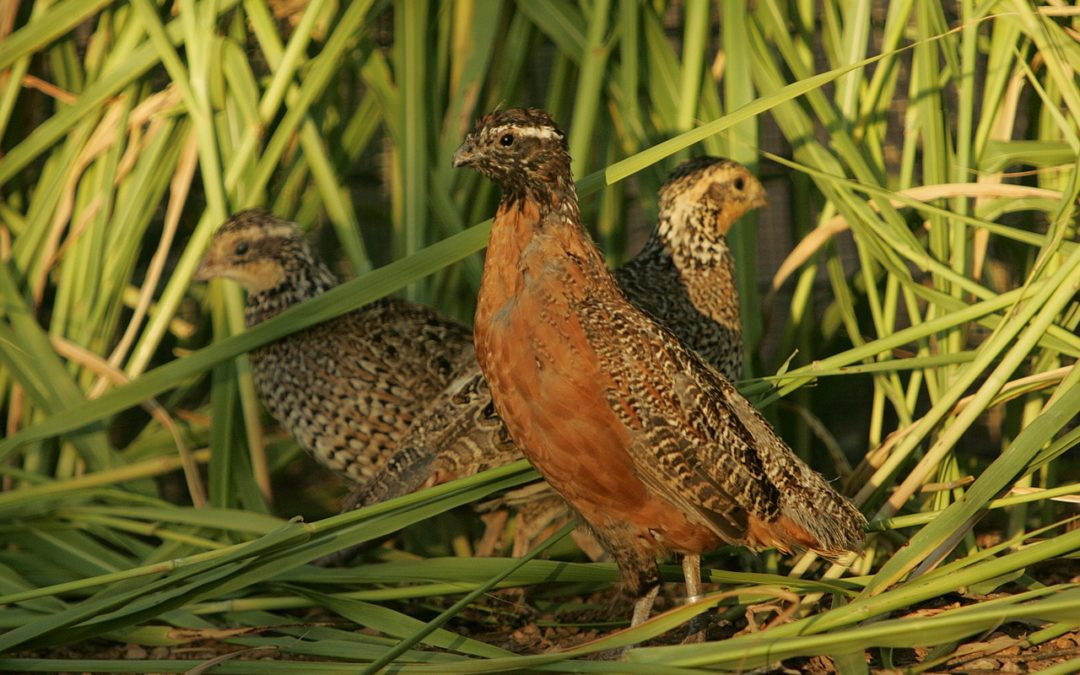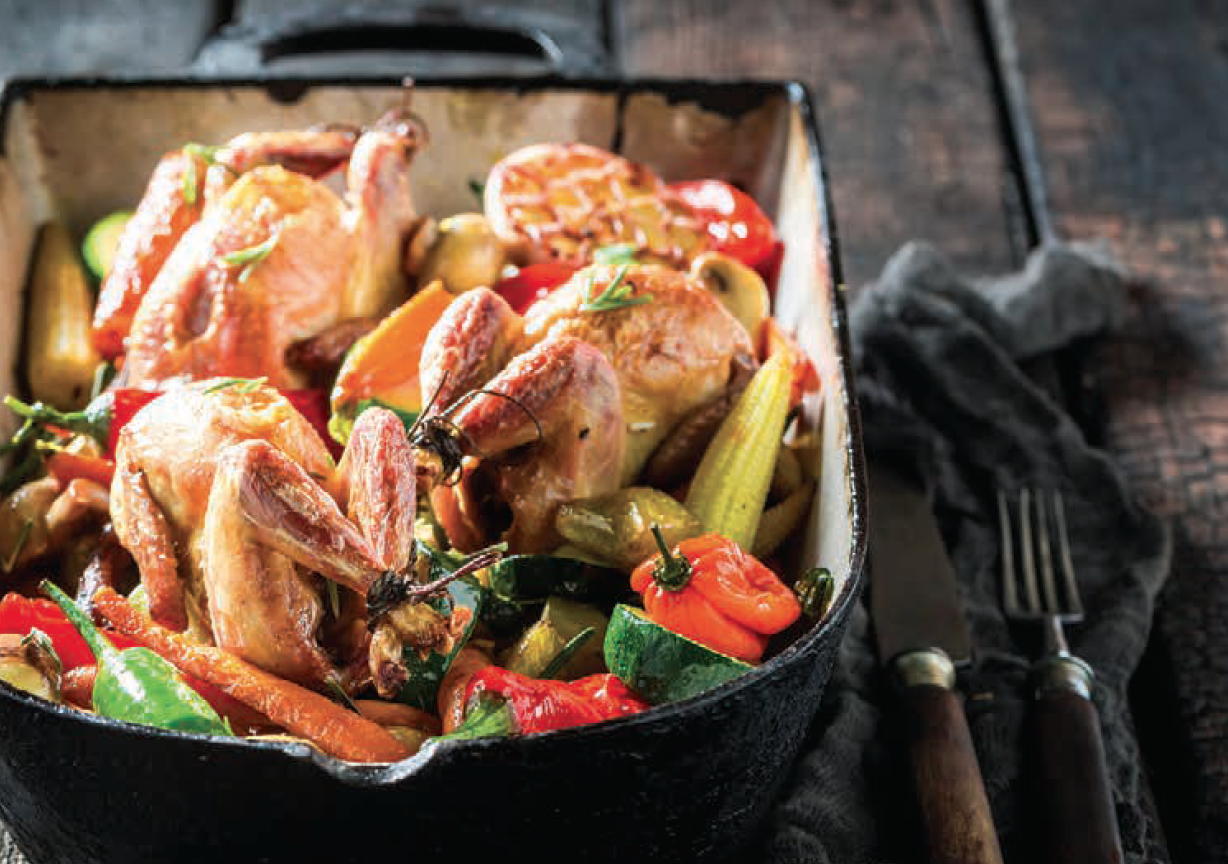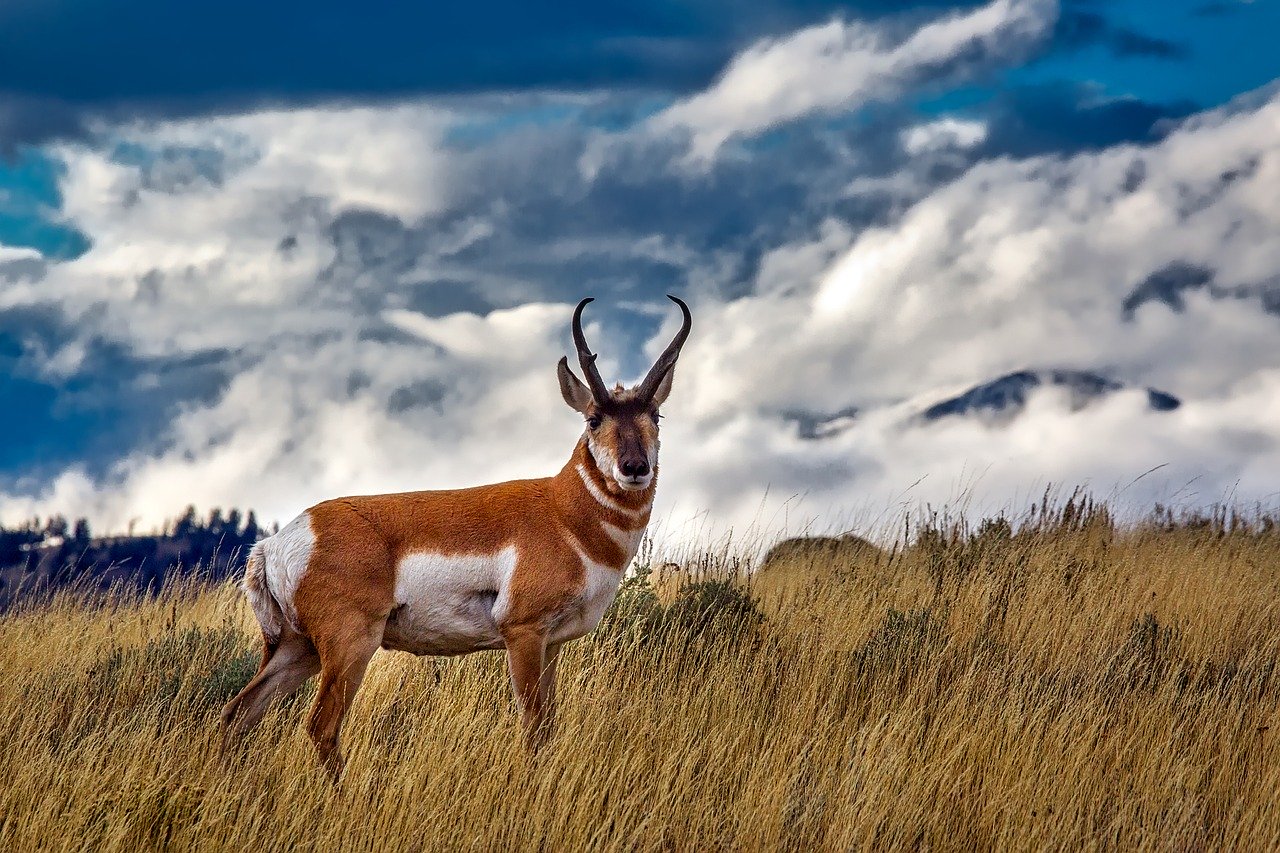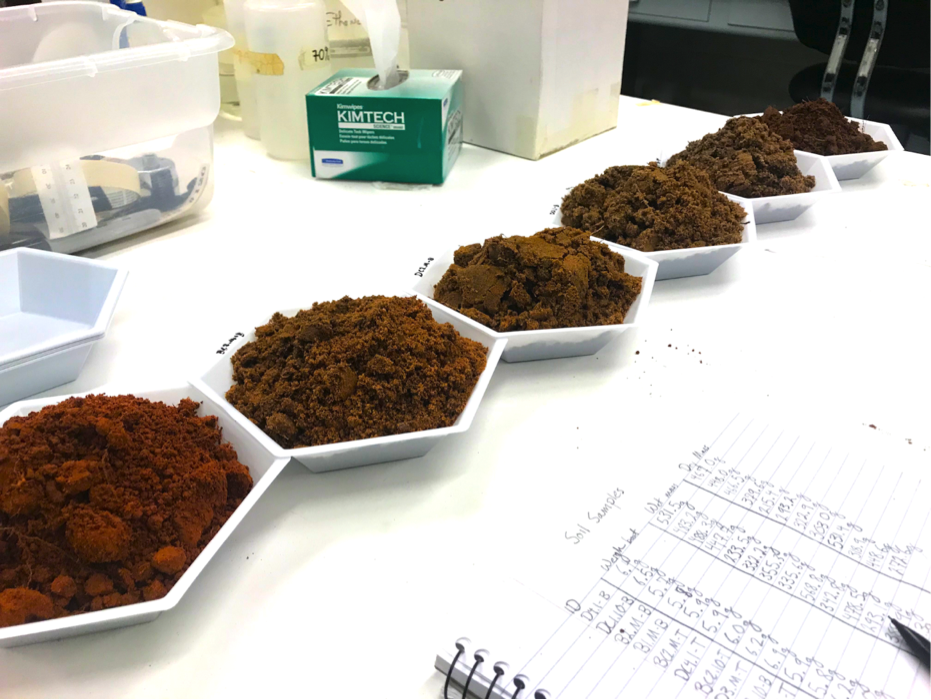
Soil samples from Packsaddle WMA showing a range of soil colors from red to dark brown, illustrating the variability in the soils present within the WMA. (Jacob Reeves)
During October, there were a total of 37 active transmitters across three of the four WMAs, with 21 active GPS transmitters at Packsaddle, 13 at Beaver River and three at Cross Timbers. All transmitters, except three at Packsaddle, were of the type with satellite-download. In total, 40,741 individual locations since the launch of the first transmitter in July 2018 have now been collected. Computerization of vegetation data collected during the past summer has continued and preliminary analyses of bird survey data and vegetation data have begun, as well as movement data from the GPS transmitters.
For the invertebrate part of the project, 190 of the 480 pitfall samples and 70 of the 90 nutrient samples had been processed by the end of October. Nutrient samples collected in both May and July have all been sorted by invertebrate order and size class (all samples remaining were collected in June), and it appears that there is size variation in several groups of invertebrates between months. For example, in May, the majority of Orthopterans (grasshoppers and crickets) are of the 5–10 mm size class, which are appropriately sized prey items for bobwhite chicks. However, in July, there are far more Orthopterans of the >15 mm size class than any other size. Additionally, soil samples collected have begun drying (roughly 50 percent complete) and soil drying should be completed by the end of the first week of November. These samples will be combusted for soil organic matter analysis, and this data will be used to examine how disking and burning alter soil moisture and organic matter content. Changes in soil moisture and organic matter content could influence the presence and abundance of detritivorous arthropods. Data on soil type will also be collected from soil maps of Packsaddle and used in analyses.
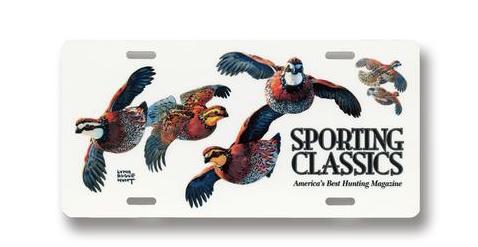 Introducing the Sporting Classics License Plates. These aluminum car tags are sure to add a bit of style and personality to any car!
Introducing the Sporting Classics License Plates. These aluminum car tags are sure to add a bit of style and personality to any car!
These license plates come in the Standard 5.875″ x 11.875″ size and are made of Aluminum. The design is permanently printed, or heated, right onto the metal using a special pigment ink process….so they are LONG LASTING! Shop Now

